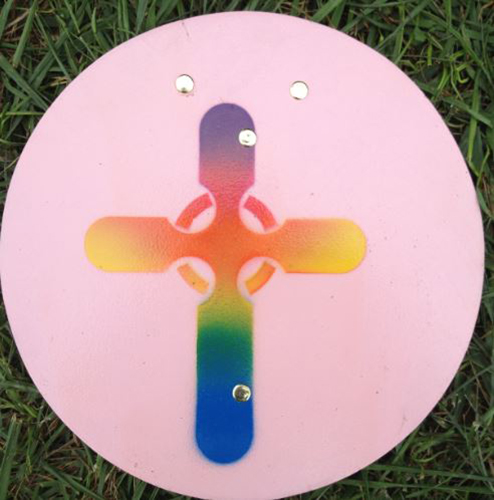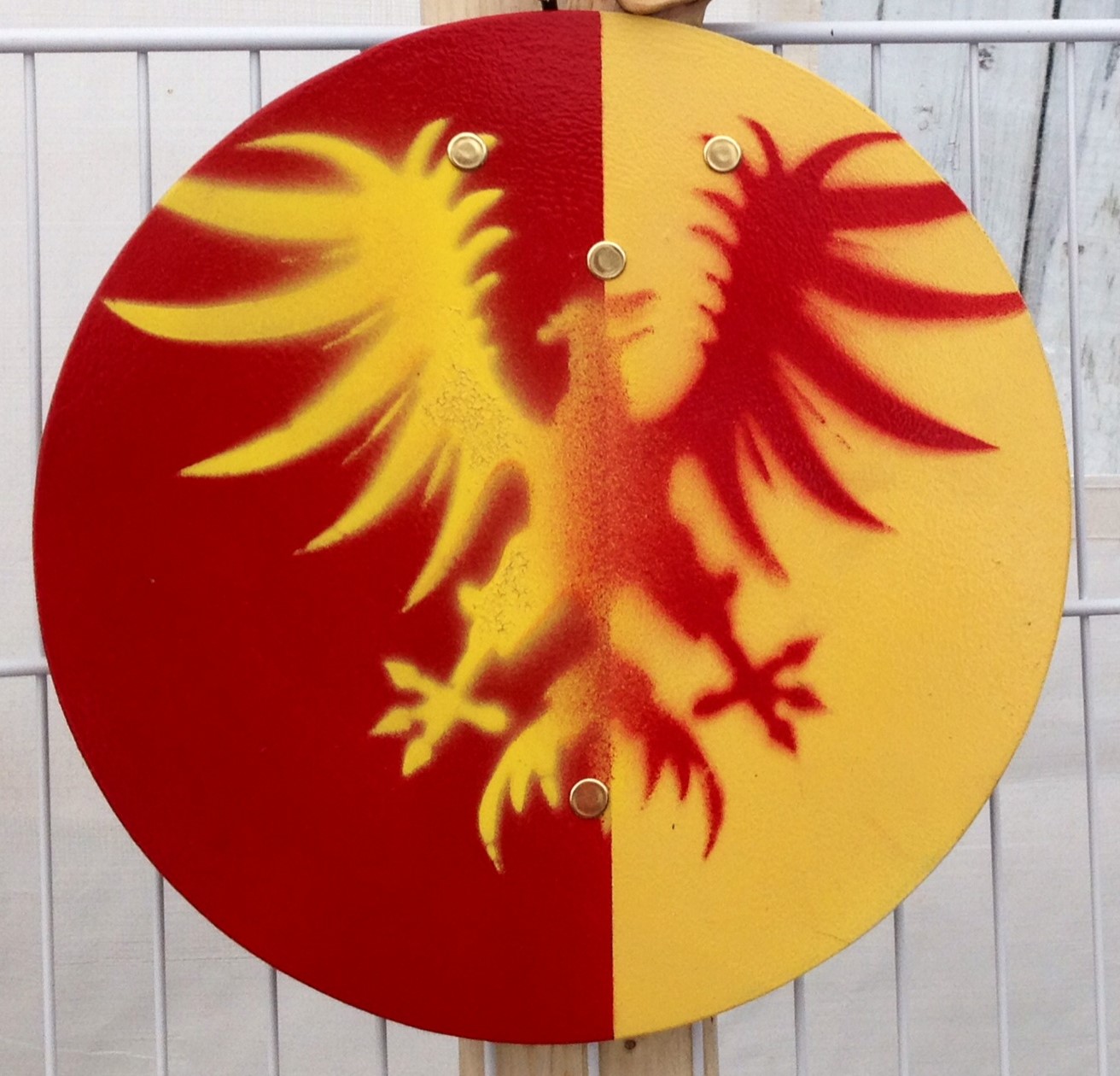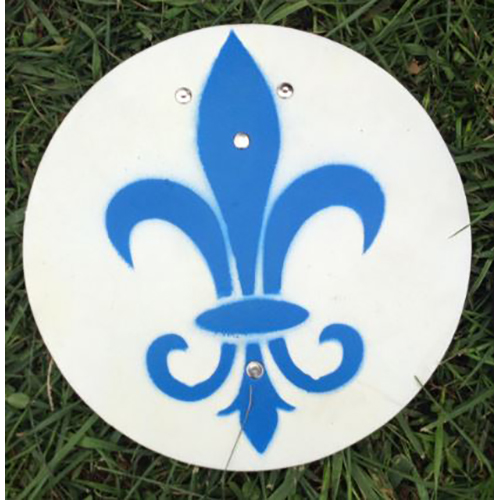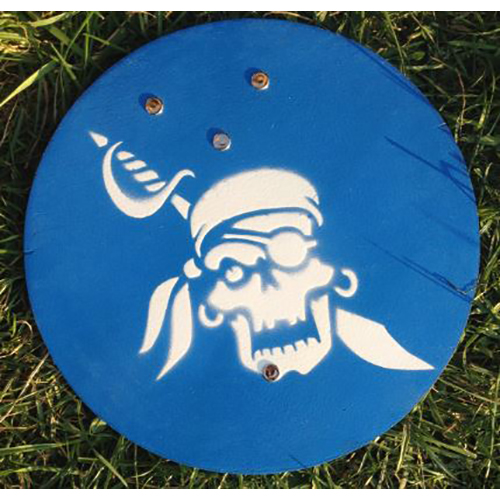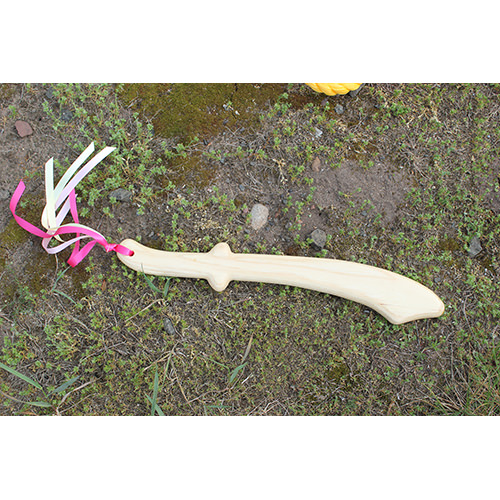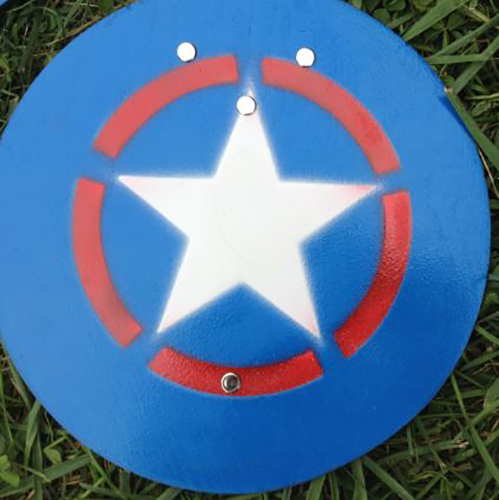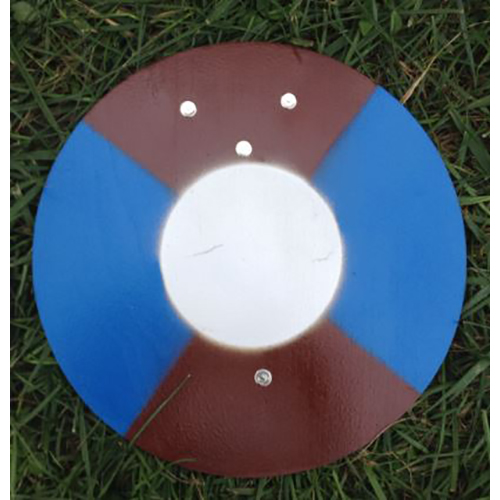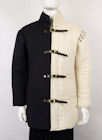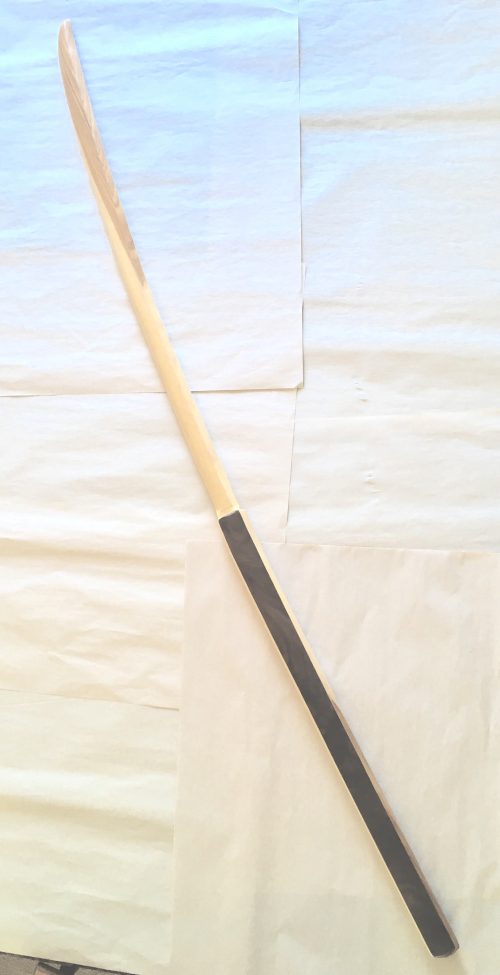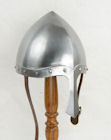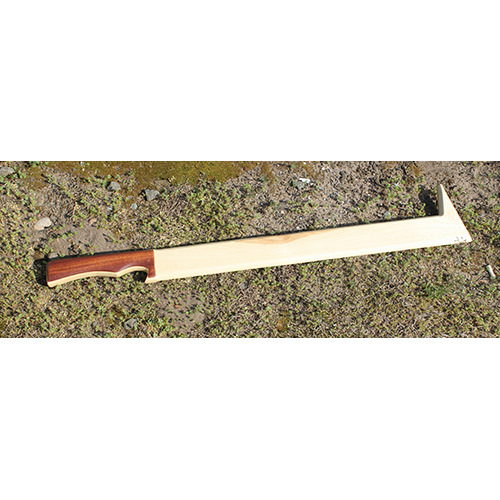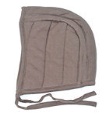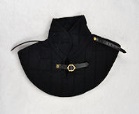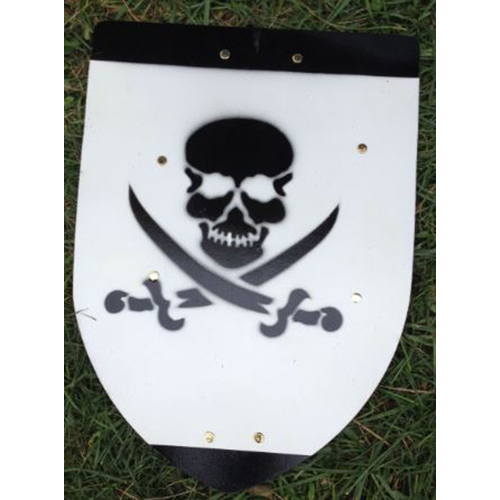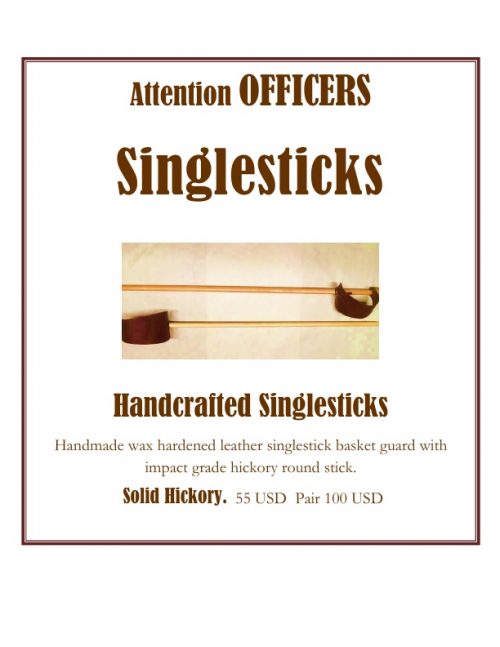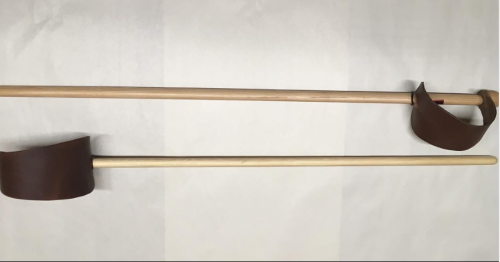-

 In a galaxy far, far away, the lightsaber is the "formal weapon of a Jedi Knight". Our lightsaber bokken can be used for full contact training without the worry of accidentally slicing off your opponent's arm. The blade length is 26" and the handle length is 10". The lightsaber crystals were used to indicate a Jedi's chosen class. Blue indicated a Jedi Guardian, a Jedi who used the Force on a more physical level. Green indicated a Jedi Consular, a Jedi who preferred to reflect on the mysteries of the Force and fight the dark side at its heart. Yellow indicated a Jedi Sentinel, a Jedi who honed their skills in a balance of combat and scholarly pursuits. The Sith and Dark Jedi wielded crimson-bladed lightsabers imbued with their negative energies. Our lightsabers handles can be wrapped in the color that signifies your Jedi Knight allegiance!
In a galaxy far, far away, the lightsaber is the "formal weapon of a Jedi Knight". Our lightsaber bokken can be used for full contact training without the worry of accidentally slicing off your opponent's arm. The blade length is 26" and the handle length is 10". The lightsaber crystals were used to indicate a Jedi's chosen class. Blue indicated a Jedi Guardian, a Jedi who used the Force on a more physical level. Green indicated a Jedi Consular, a Jedi who preferred to reflect on the mysteries of the Force and fight the dark side at its heart. Yellow indicated a Jedi Sentinel, a Jedi who honed their skills in a balance of combat and scholarly pursuits. The Sith and Dark Jedi wielded crimson-bladed lightsabers imbued with their negative energies. Our lightsabers handles can be wrapped in the color that signifies your Jedi Knight allegiance! -
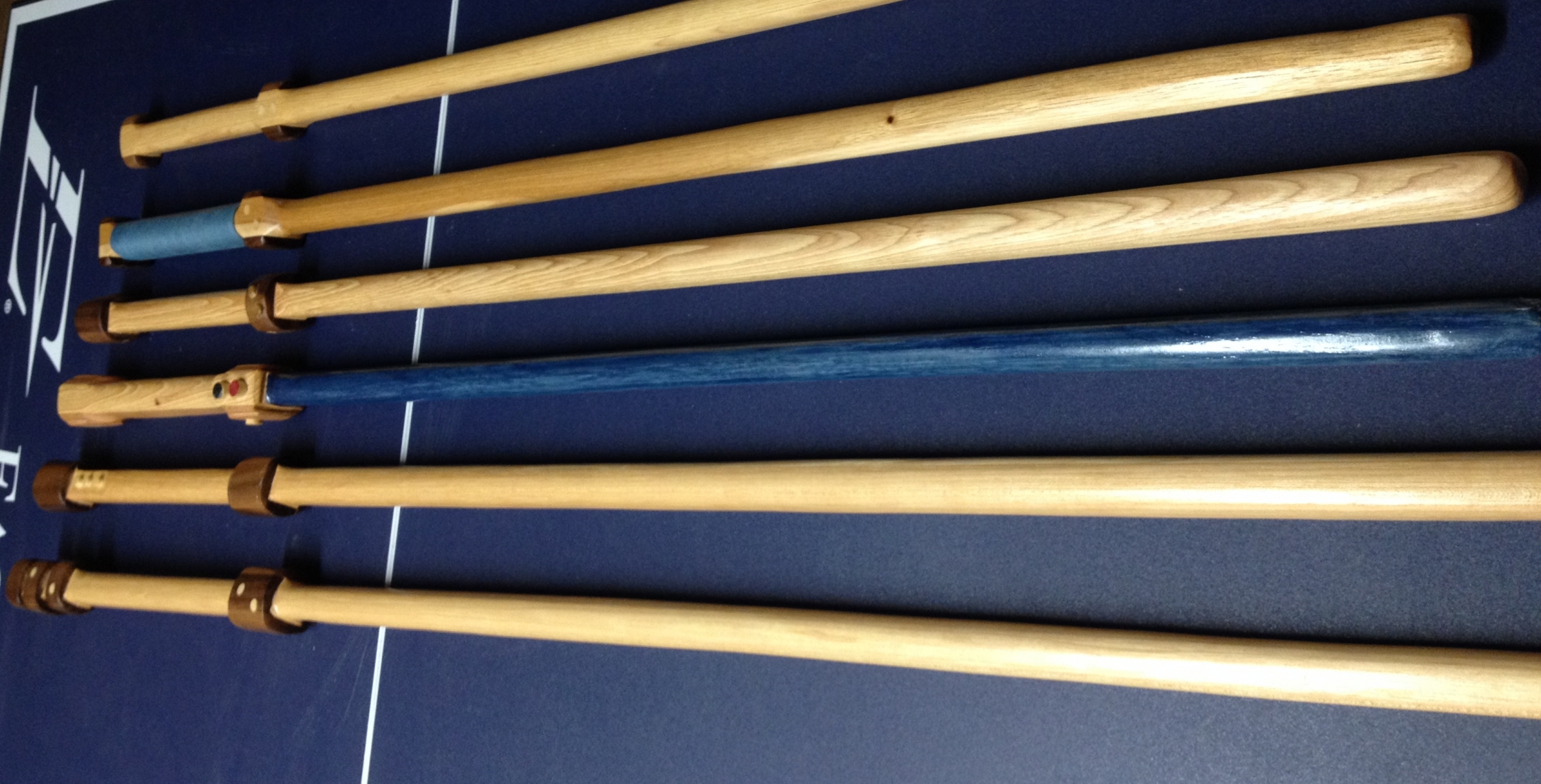
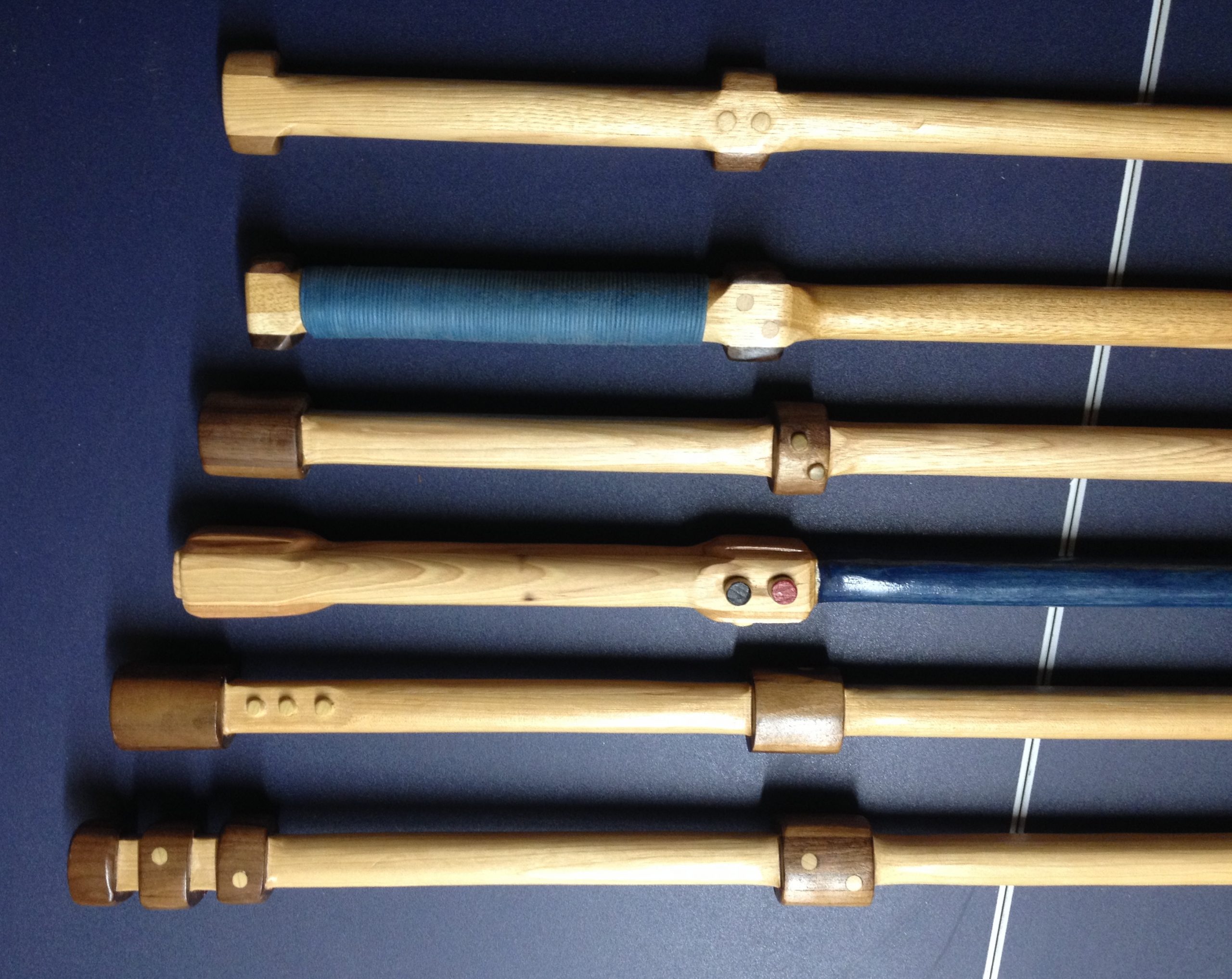 In a galaxy far, far away, the lightsaber is the "formal weapon of a Jedi Knight". Our lightsaber bokken can be used for full contact training without the worry of accidentally slicing off your opponent's arm. The blade length is 32" and the handle length can be customized: 10", 12", 14" or 16". NOTE: After numerous Jedi academies have tested their lightsaber bokkens out, Hickory Arms will ascribe to the third design down with flat "buttons". The trim pieces will only be in Hickory for added durability. We also offer a youth version of the Lightsaber Bokken here. The lightsaber crystals were used to indicate a Jedi's chosen class. Blue indicated a Jedi Guardian, a Jedi who used the Force on a more physical level. Green indicated a Jedi Consular, a Jedi who preferred to reflect on the mysteries of the Force and fight the dark side at its heart. Yellow indicated a Jedi Sentinel, a Jedi who honed their skills in a balance of combat and scholarly pursuits. The Sith and Dark Jedi wielded crimson-bladed lightsabers imbued with their negative energies. Our lightsabers handles can be wrapped in the color that signifies your Jedi Knight allegiance!
In a galaxy far, far away, the lightsaber is the "formal weapon of a Jedi Knight". Our lightsaber bokken can be used for full contact training without the worry of accidentally slicing off your opponent's arm. The blade length is 32" and the handle length can be customized: 10", 12", 14" or 16". NOTE: After numerous Jedi academies have tested their lightsaber bokkens out, Hickory Arms will ascribe to the third design down with flat "buttons". The trim pieces will only be in Hickory for added durability. We also offer a youth version of the Lightsaber Bokken here. The lightsaber crystals were used to indicate a Jedi's chosen class. Blue indicated a Jedi Guardian, a Jedi who used the Force on a more physical level. Green indicated a Jedi Consular, a Jedi who preferred to reflect on the mysteries of the Force and fight the dark side at its heart. Yellow indicated a Jedi Sentinel, a Jedi who honed their skills in a balance of combat and scholarly pursuits. The Sith and Dark Jedi wielded crimson-bladed lightsabers imbued with their negative energies. Our lightsabers handles can be wrapped in the color that signifies your Jedi Knight allegiance! -
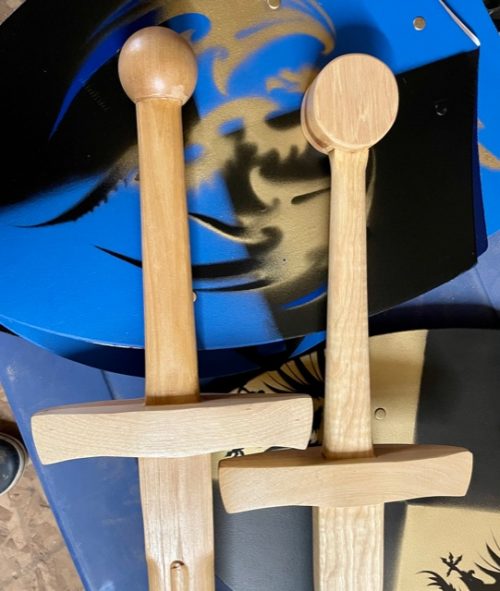
 Medieval longswords are the classic hand and a half sword or war sword of the 14th and 15th centuries. The hand and a half sword was typically straight, double-edged, with a simple cruciform hilt. It grew naturally out of the older, single-handed sword, as a means of combating heavier chain mail, and reinforced chain mail armour. Overall length of the longsword is 47", blade length is 35" and handle is 8".
Medieval longswords are the classic hand and a half sword or war sword of the 14th and 15th centuries. The hand and a half sword was typically straight, double-edged, with a simple cruciform hilt. It grew naturally out of the older, single-handed sword, as a means of combating heavier chain mail, and reinforced chain mail armour. Overall length of the longsword is 47", blade length is 35" and handle is 8". -
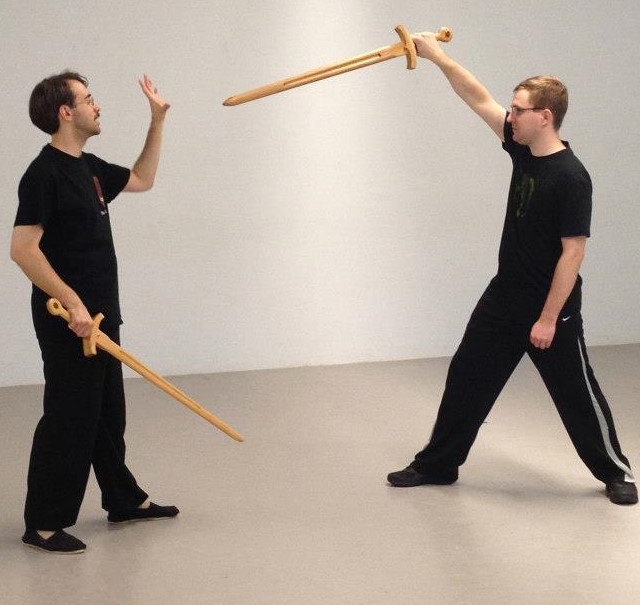
 Length: Overall 40”, Blade 31”, Handle 5” A sword with a broad blade and usually two lethal cutting edges. The Broadsword was used to cut rather than stab. The Normans (also called Northmen or Norsemen) were the descendants of the Scandinavian Vikings who raided the European coastal settlements at the outset of the 8th century. Despite the Norman's conversion to Christianity and their adoption of Frankish way of life, the Normans retained many of the traits of their Germanic ancestors.
Length: Overall 40”, Blade 31”, Handle 5” A sword with a broad blade and usually two lethal cutting edges. The Broadsword was used to cut rather than stab. The Normans (also called Northmen or Norsemen) were the descendants of the Scandinavian Vikings who raided the European coastal settlements at the outset of the 8th century. Despite the Norman's conversion to Christianity and their adoption of Frankish way of life, the Normans retained many of the traits of their Germanic ancestors. -
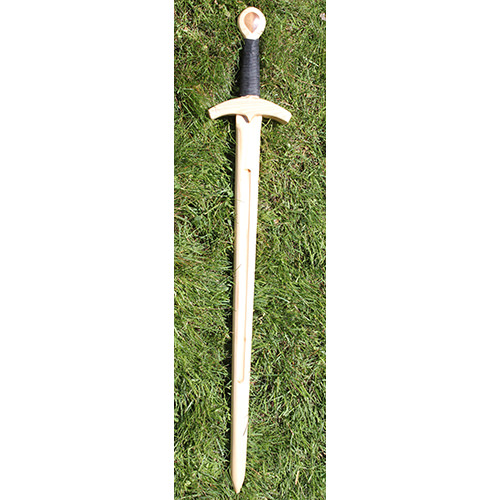 This is an Intermedial-level sword, appropriate for younger or less experienced swordspeople. A sword with a broad blade and usually two lethal cutting edges. The Broadsword was used to cut rather than stab. The Normans (also called Northmen or Norsemen) were the descendants of the Scandinavian Vikings who raided the European coastal settlements at the outset of the 8th century. Despite the Norman's conversion to Christianity and their adoption of Frankish way of life, the Normans retained many of the traits of their Germanic ancestors.
This is an Intermedial-level sword, appropriate for younger or less experienced swordspeople. A sword with a broad blade and usually two lethal cutting edges. The Broadsword was used to cut rather than stab. The Normans (also called Northmen or Norsemen) were the descendants of the Scandinavian Vikings who raided the European coastal settlements at the outset of the 8th century. Despite the Norman's conversion to Christianity and their adoption of Frankish way of life, the Normans retained many of the traits of their Germanic ancestors. -
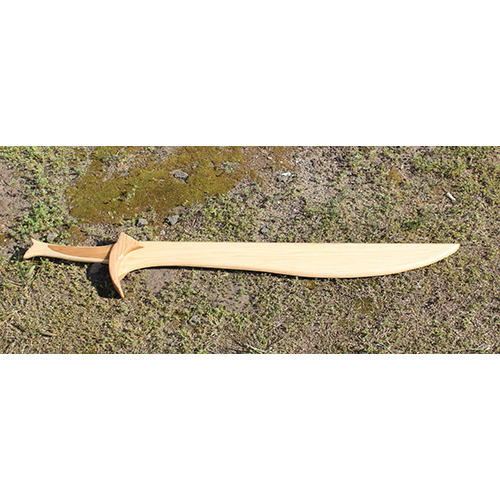 Length: Overall 38.5”, Blade 30”, Handle 8” It is ironic that Thorin Oakenshield’s famous sword was not forged by dwarves at all, but by elves of the First Age, and was originally made for the warriors of Gondolin. It was called Orcrist, or Orc-cleaver, and though it had fallen into obscurity by the time Thorin found it, the fear it could strike into the hearts of goblins had not waned with age. They named it Biter, and hated its new owner all the more for bringing it back to the light.
Length: Overall 38.5”, Blade 30”, Handle 8” It is ironic that Thorin Oakenshield’s famous sword was not forged by dwarves at all, but by elves of the First Age, and was originally made for the warriors of Gondolin. It was called Orcrist, or Orc-cleaver, and though it had fallen into obscurity by the time Thorin found it, the fear it could strike into the hearts of goblins had not waned with age. They named it Biter, and hated its new owner all the more for bringing it back to the light. -
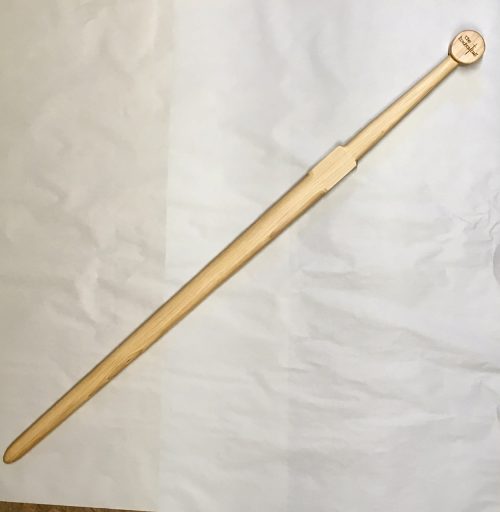
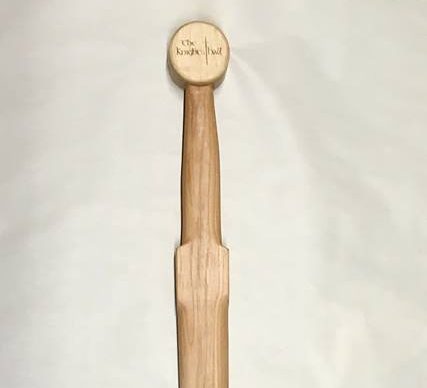 The Knights Hall Armored Combat Training Systems Kit: The Waster / Pell Trainer Hickory arming sword trainer with The Knights Hall lasered on the pommel. Arming Sword overall length is .34.5". The pell trainer is available as the arming sword, longsword, falchion, and great sword.
The Knights Hall Armored Combat Training Systems Kit: The Waster / Pell Trainer Hickory arming sword trainer with The Knights Hall lasered on the pommel. Arming Sword overall length is .34.5". The pell trainer is available as the arming sword, longsword, falchion, and great sword. -
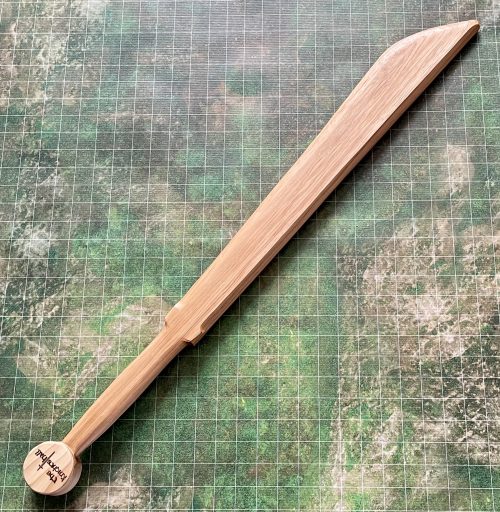
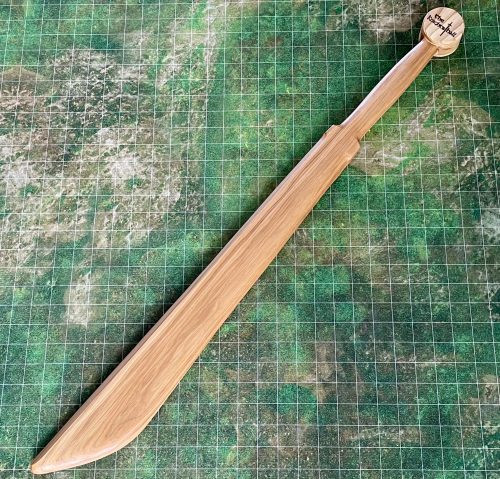 The Knights Hall Armored Combat Training Systems Kit: The Waster / Pell Trainer Hickory Falchion sword trainer with The Knights Hall lasered on the pommel. Falchion overall length is 34". The pell trainer is available as the arming sword, longsword, falchion, and great sword.
The Knights Hall Armored Combat Training Systems Kit: The Waster / Pell Trainer Hickory Falchion sword trainer with The Knights Hall lasered on the pommel. Falchion overall length is 34". The pell trainer is available as the arming sword, longsword, falchion, and great sword. -
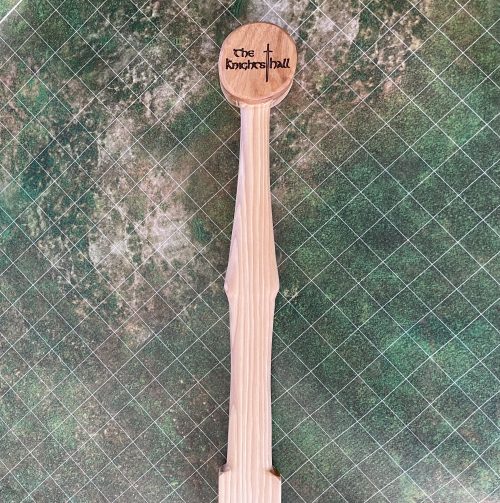
 The Knights Hall Armored Combat Training Systems Kit: The Waster / Pell Trainer Hickory Great sword trainer with The Knights Hall lasered on the pommel. Great sword overall length is 52". The pell trainer is available as the arming sword, longsword, falchion, and great sword.
The Knights Hall Armored Combat Training Systems Kit: The Waster / Pell Trainer Hickory Great sword trainer with The Knights Hall lasered on the pommel. Great sword overall length is 52". The pell trainer is available as the arming sword, longsword, falchion, and great sword. -

 The Knights Hall Armored Combat Training Systems Kit: The Waster / Pell Trainer Hickory Longsword trainer with The Knights Hall lasered on the pommel. Longsword overall length is 47". The pell trainer is available as the arming sword, longsword, falchion, and great sword.
The Knights Hall Armored Combat Training Systems Kit: The Waster / Pell Trainer Hickory Longsword trainer with The Knights Hall lasered on the pommel. Longsword overall length is 47". The pell trainer is available as the arming sword, longsword, falchion, and great sword. -
Out of stock

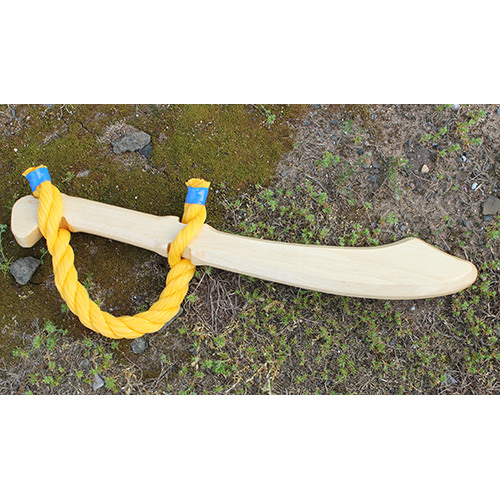 Rugged hickory pirate cutlass is 14" long, a perfect size for a little swashbuckler. Custom engraving on bulk order by request.
Rugged hickory pirate cutlass is 14" long, a perfect size for a little swashbuckler. Custom engraving on bulk order by request. -
Out of stock
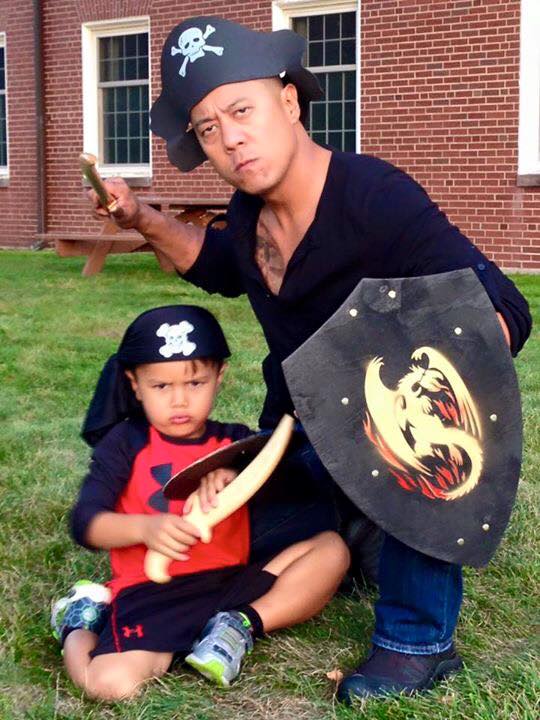
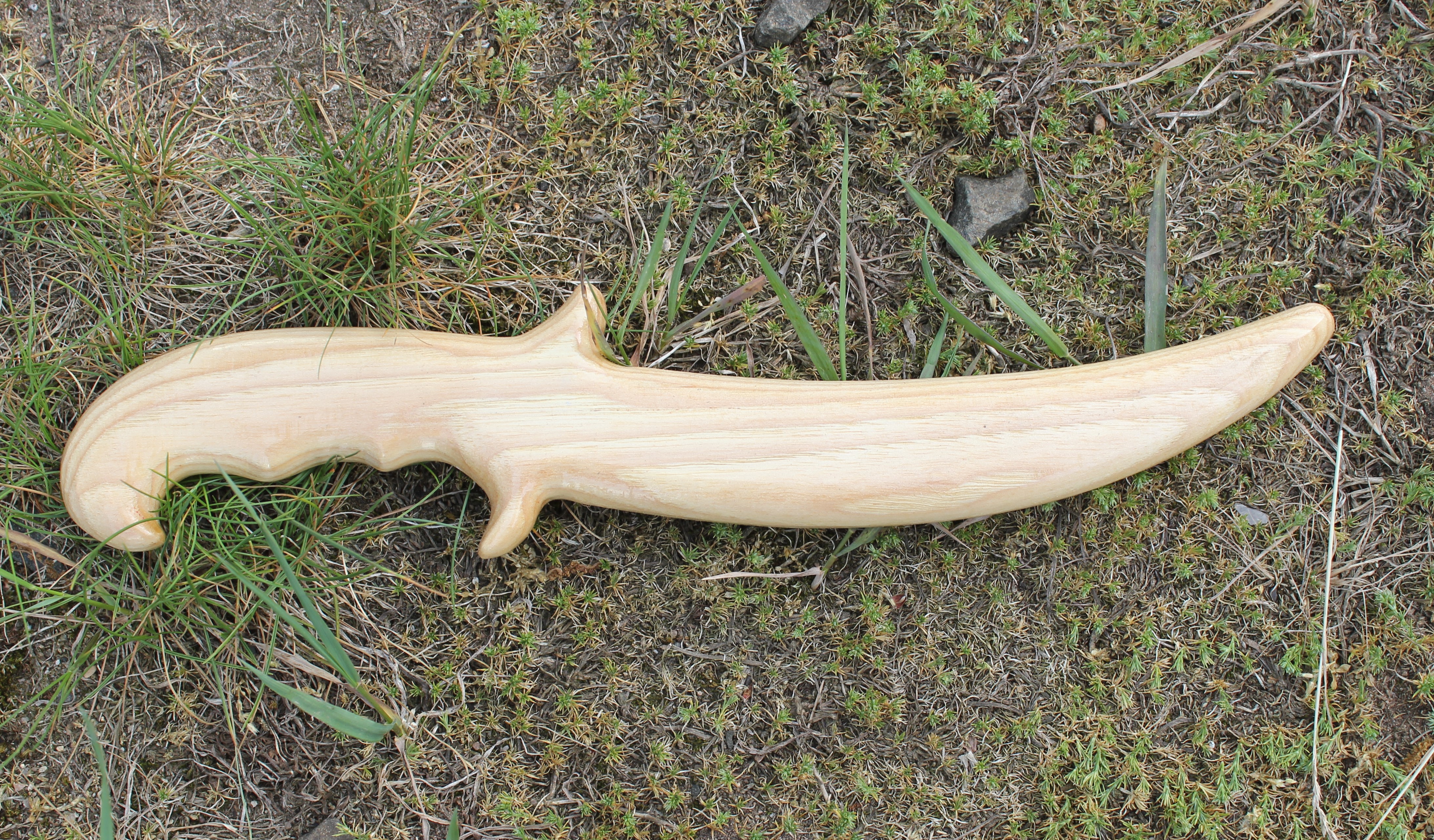 Rugged hickory dagger is 14" long, a perfect size for a little pirate.
Rugged hickory dagger is 14" long, a perfect size for a little pirate. -
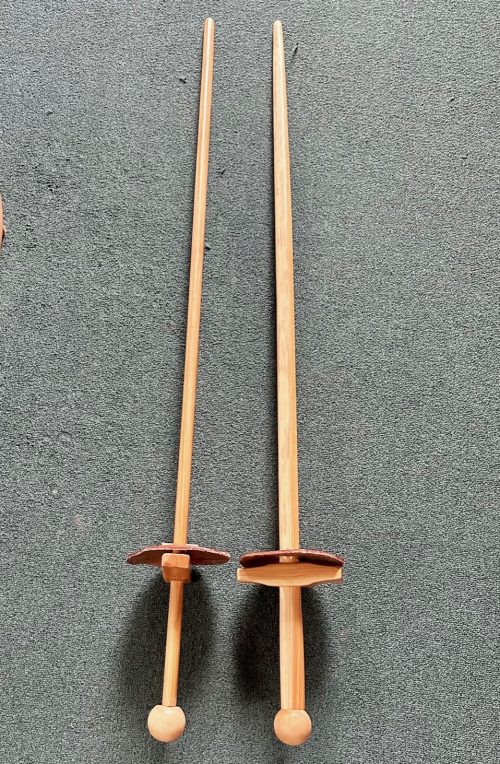
 Musketeer Rapier, 46" overall, 37.5" blade, with wood guard and round leather guard below guard. You can order the rapier with or without leather basket and hand and a half (pictured) or single handed handle. Because it allowed for fast reactions and had a long reach, the rapier was well-suited to civilian combat during the 16th and 17th Centuries. Rapiers were common among bodyguards like the elite French Royal Guards or Swiss Papal Guards, especially since they needed a weapon that could be used indoors or in crowded areas.
Musketeer Rapier, 46" overall, 37.5" blade, with wood guard and round leather guard below guard. You can order the rapier with or without leather basket and hand and a half (pictured) or single handed handle. Because it allowed for fast reactions and had a long reach, the rapier was well-suited to civilian combat during the 16th and 17th Centuries. Rapiers were common among bodyguards like the elite French Royal Guards or Swiss Papal Guards, especially since they needed a weapon that could be used indoors or in crowded areas. -
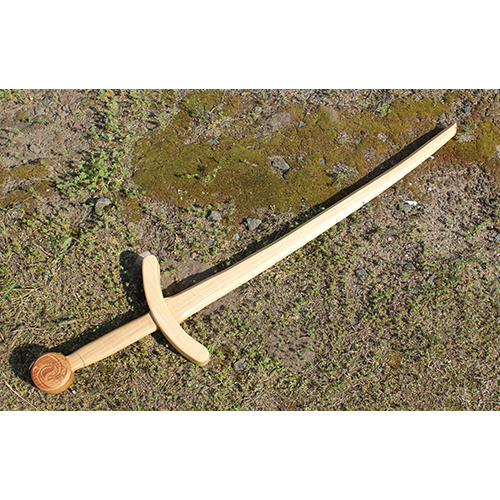 Length: Overall 35” Blade 27 ¾” Handle 6” This weapon was a type of sword most commonly associated with the Saracens in the Holy Land who fought against the Crusaders. The Scimitar was used for slicing attacks and often used from horseback.. Scimitars had a distinct curved blade ending with a sharp point.
Length: Overall 35” Blade 27 ¾” Handle 6” This weapon was a type of sword most commonly associated with the Saracens in the Holy Land who fought against the Crusaders. The Scimitar was used for slicing attacks and often used from horseback.. Scimitars had a distinct curved blade ending with a sharp point. -
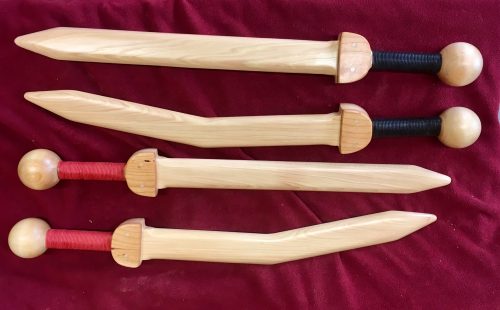 Length: Overall 27”, Blade 19”, Handle 8” The Sica Gladiator sword is designed to intimidate and bludgeon the opponent’s fearlessness. Adorned with a curved pointed blade, the Gladiator sword is not only an extremely powerful cutter, but a deadly slasher. The Gladius comes with a wrapped handle. Please choose unwrapped handle and your color choice for the wrap as there is not a charge to wrap the handle.
Length: Overall 27”, Blade 19”, Handle 8” The Sica Gladiator sword is designed to intimidate and bludgeon the opponent’s fearlessness. Adorned with a curved pointed blade, the Gladiator sword is not only an extremely powerful cutter, but a deadly slasher. The Gladius comes with a wrapped handle. Please choose unwrapped handle and your color choice for the wrap as there is not a charge to wrap the handle. -
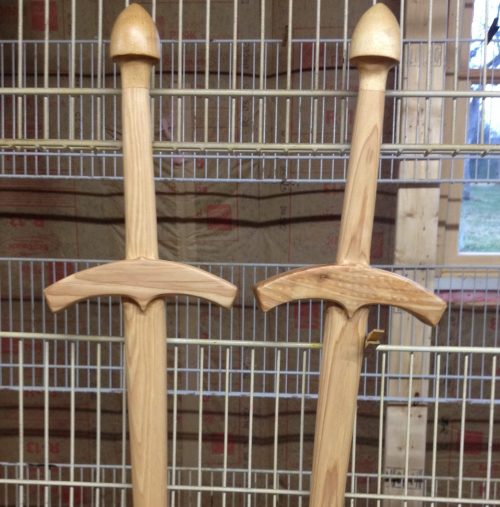 Our sparring dagger or parrying dagger is a category of small handheld weapons from the European late Middle Ages and early Renaissance. These weapons were used as off-hand weapons in conjunction with a single-handed sword. As the name implies they were designed to parry, or defend, more effectively than a simple dagger form, typically incorporating a wider guard, and often some other defensive features to better protect the hand as well.
Our sparring dagger or parrying dagger is a category of small handheld weapons from the European late Middle Ages and early Renaissance. These weapons were used as off-hand weapons in conjunction with a single-handed sword. As the name implies they were designed to parry, or defend, more effectively than a simple dagger form, typically incorporating a wider guard, and often some other defensive features to better protect the hand as well. -
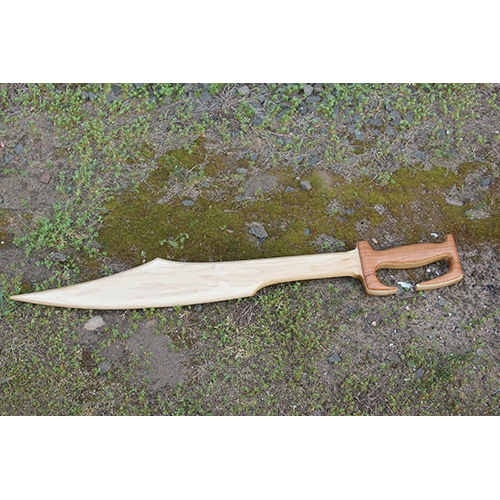 Length: Overall 30”, Blade 23”, Handle 7” The tale of “Leonidas and his brave 300” has inspired many works of fiction. The battle ready swords used by the Spartans in the film are not historically based with its short and single edged blade. However, the design manages to convey "Spartan" ideals synonymous for anyone rigorously self-disciplined or courageous in the face of pain, danger, or adversity. Recommended for form training only.
Length: Overall 30”, Blade 23”, Handle 7” The tale of “Leonidas and his brave 300” has inspired many works of fiction. The battle ready swords used by the Spartans in the film are not historically based with its short and single edged blade. However, the design manages to convey "Spartan" ideals synonymous for anyone rigorously self-disciplined or courageous in the face of pain, danger, or adversity. Recommended for form training only. -
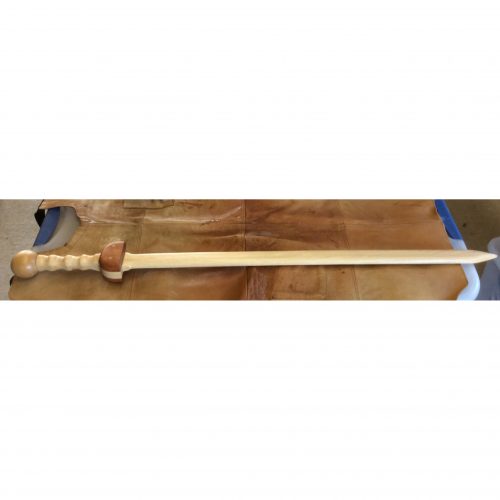 Length: Overall 42”, Handle 5”, 1.6" wide blade The spatha was similar to the gladius in many ways. It was double-edged, with a short handle and a tapered point. However, it was longer, roughly 30-40 inches long. The spatha was inspired by the long swords of Celts in Germany and Britain. The longer reach of the gladius style sword was favored by the calvary.
Length: Overall 42”, Handle 5”, 1.6" wide blade The spatha was similar to the gladius in many ways. It was double-edged, with a short handle and a tapered point. However, it was longer, roughly 30-40 inches long. The spatha was inspired by the long swords of Celts in Germany and Britain. The longer reach of the gladius style sword was favored by the calvary. -
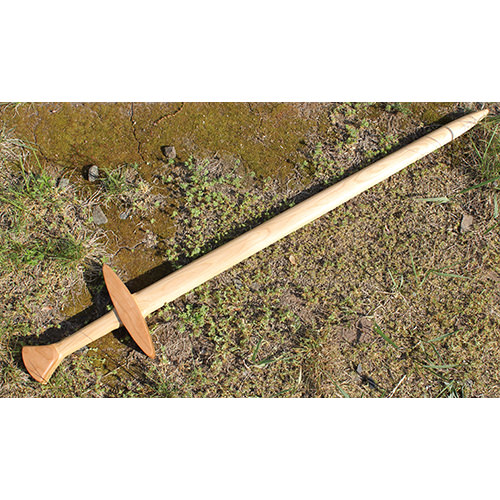 Length: Overall 33.5”, Blade 25.5”, Handle 4” This is an Intermedial-level sword, appropriate for younger or less experienced swordspeople. Initially, squires were a knight’s trainees/apprentices. A knight typically took his squire into battle and gave him a chance to prove himself. If he proved his loyalty and skill in battle, he would have a “dubbing”, an official ceremony that made him a knight. Great for a first sword, the squire sword helps to improve arm strength and technique.
Length: Overall 33.5”, Blade 25.5”, Handle 4” This is an Intermedial-level sword, appropriate for younger or less experienced swordspeople. Initially, squires were a knight’s trainees/apprentices. A knight typically took his squire into battle and gave him a chance to prove himself. If he proved his loyalty and skill in battle, he would have a “dubbing”, an official ceremony that made him a knight. Great for a first sword, the squire sword helps to improve arm strength and technique.





